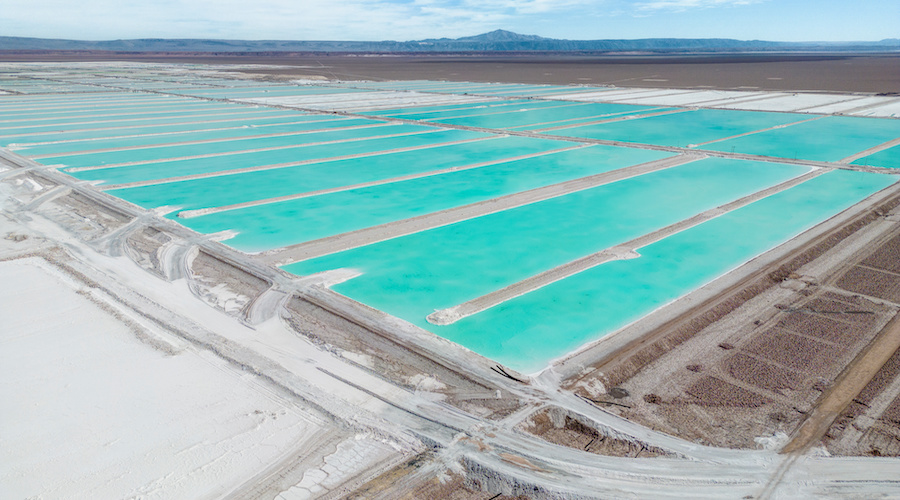Sign up for daily news updates from CleanTechnica on email. Or follow us on Google News!
The rare precious metal iridium is a key ingredient in the electrolyzer systems used to produce green hydrogen. “Rare” is the key word. The market for green hydrogen is growing, and analysts expect that electrolyzer demand will soon outstrip the supply of iridium-juiced systems. That may suit commodity speculators, at least for the time being. As for the long run, workarounds are already emerging and the US Department of Energy is on the case.
Green Hydrogen Hearts Iridium…
Green hydrogen refers to hydrogen produced by electrolyzer systems, which deploy renewable energy and catalysts to “split” water into hydrogen and oxygen (much more CleanTechnica coverage is here).
As a new industry, green hydrogen currently accounts for just about 1% of the global hydrogen supply. The other 99% still comes from natural gas, and coal to a lesser extent, which means there is a lot of catching up to do.
The going will be slow until green hydrogen can meet or beat the cost of fossil-sourced hydrogen. With the current cost of green hydrogen estimated at around $5.00 per kilogram, the US Department of Energy is among those eyeballing a price point of $1.00 by 2030.
By way of comparison, the International Energy Agency has cited a range of just 50 cents to $1.70 for fossil-sourced hydrogen, depending on the region. Even with the added expense of carbon capture, fossil-sourced hydrogen is still a bargain in the range of $1.00 to $2.00 according to IEA’s calculations.
Iridium has emerged as one big, fat stumbling block along the road to low cost green hydrogen. Iridium oxide catalysts take care of the the oxygen-producing side of electrolysis in a polymer electrolyte membrane (PEM) electrolyzer system. Despite the high cost and limited supply, PEM stakeholders prefer iridium due to its energy efficiency, stability, and durability.
PEM systems are also considered to be one of just two green hydrogen technologies that have been outstripping others on the road to mass commercialization. Writing for the Hydrogen Insight last year, Jacques Moss of the research firm Guidehouse Insights noted that PEM systems alone accounted for almost half of electrolyzer manufacturing capacity in the pipeline in 2022.
…But It’s Time To Move On
Given the dominance of PEM systems in the green hydrogen market, cutting costs are a priority, and all eyes are on iridium. As Moss noted, “material sourcing concerns are most acutely focused on iridium” within the hydrogen industry.
No kidding. “The metal is found in extremely low concentrations in the earth’s crust — at approximately 0.000003 parts per million. It is only extracted as a by-product isolated during platinum and palladium production at an annual tonnage measured in the single digits,” Moss explained.
To further complicate the iridium supply chain, a single country currently crushes the competition. That would be South Africa, which accounted for almost 90% of virgin iridium on the market as of last year.
New Materials For Green Hydrogen
One obvious workaround is to find alternative, abundant catalysts that meet or beat iridium on performance and cost. This pathway is still in the R&D phase, but momentum appears to be building.
The clean chemicals firm Mattiq, for example, emailed CleanTechnica last month with a heads-up on its new study of alternative PEM catalysts, culled through its AI-assisted, rapidfire assessment system.
“Over the prior months, we synthesized and evaluated millions of combinations of different elements for durability, efficacy and practicality for industrial applications,” explained Dr. Andrey Ivankin, Mattiq CTO and co-founder. “Work that used to take years can now be done in a fraction of that time with greater rigor than ever before.”
“Each alternative has the potential to meet or exceed that material’s performance, but with a much lower cost and greater availability,” the company added.
Other researchers have focused on ruthenium. Last year, a team at Rice University, for example, reported good results for a their nickel-doped ruthenium oxide catalyst.
“Iridium costs roughly eight times more than ruthenium and it could account for 20% to 40% of the expense in commercial device manufacturing, especially in future large-scale deployment,” noted team leader Haotian Wang of the school’s George R. Brown School of Engineering.
The company H2U Technologies also has high hopes for its iridium-free PEM system. In addition to reducing the up-front cost of materials, the company anticipates that iridium-free systems will open up new pathways to cutting costs.
“Utilizing these affordable alternatives expands the possibilities for electrolyzer stack design, enabling H2U to explore avenues unrestricted by ultra-thin catalyst layers and low usage of catalysts. This flexibility significantly reduces capital expenses, producing more affordable delivered hydrogen,” H2U explains.
Many Roads To The Green Hydrogen Economy Of The Future
The US Department of Energy is also chipping in with a new $750 million green hydrogen funding pot aimed at cutting the cost of manufacturing electrolyzers. The new round of funding, which comes under the Bipartisan Infrastructure Law, also focuses on recycling to help bolster the electrolyzer supply chain and reduce costs. The award announcements are expected later this year.
While PEM electrolyzers are a significant piece of the green hydrogen puzzle, they are not the only way to produce non-fossil hydrogen.
Alternative supply chains have been emerging that draw from hydrogen-rich resources including landfill gas, municipal wastewater, industrial waste gases, and waste plastics.
In one particularly interesting development, last month a Rice University research team proposed a system for extracting hydrogen from waste plastic that could pay for itself.
“In this work, we converted waste plastics — including mixed waste plastics that don’t have to be sorted by type or washed ⎯ into high-yield hydrogen gas and high-value graphene,” explained lead author Kevin Wyss. “If the produced graphene is sold at only 5% of current market value — a 95% off sale! — clean hydrogen could be produced for free.
More And Better Electrolyzers
Alternative electrolyzer systems are also coming into play. In particular, anion exchange membrane (AEM) systems have been leveling up their game, though they still have some work to do.
“Although AEM electrolyzers can potentially offer “the best of both worlds” when compared to alkaline electrolyzers and PEM electrolyzers, significant technology development is still required for the technology to become competitive,” the Ammonia Energy Association noted in August. “For example, membrane lifetime is a key concern, as the current membranes are highly sensitive to oxygen.”
Despite the drawbacks, AEM technology provides for significant cost savings due to its use of low cost nickel catalysts. The German electrolyzer firm Sunfire, for example, has identified industrial use cases as an ideal setting for AEM technology.
Last spring, Sunfire announced that it has paired with Germany’s Fraunhofer IFAM research institution and the Canadian firm Ionomr Innovations to pursue the industrial pathway for AEM systems. The National Research Council of Canada, Simon Fraser University and the University of Alberta are also partnering in the effort under the umbrella of the “Integrate” project.
The German Federal Ministry of Education and Research also committed to supporting the project last year.
Fossil-sourced hydrogen stakeholders are still hoping for a piece of the action in the sparkling green hydrogen economy of the future, but prospects for that are dimming with every new twist of the green hydrogen tale.
Follow me tinamcasey on Bluesky, Threads, Post, LinkedIn, and Spoutible
Image: The chemicals firm Mattiq is among the electrolyzer stakeholders working to forestall a potential iridium supply chain bottleneck for green hydrogen (courtesy of Mattiq via email).
Have a tip for CleanTechnica? Want to advertise? Want to suggest a guest for our CleanTech Talk podcast? Contact us here.
EV Obsession Daily!
I don’t like paywalls. You don’t like paywalls. Who likes paywalls? Here at CleanTechnica, we implemented a limited paywall for a while, but it always felt wrong — and it was always tough to decide what we should put behind there. In theory, your most exclusive and best content goes behind a paywall. But then fewer people read it!! So, we’ve decided to completely nix paywalls here at CleanTechnica. But…
Thank you!
Tesla Sales in 2023, 2024, and 2030
CleanTechnica uses affiliate links. See our policy here.



